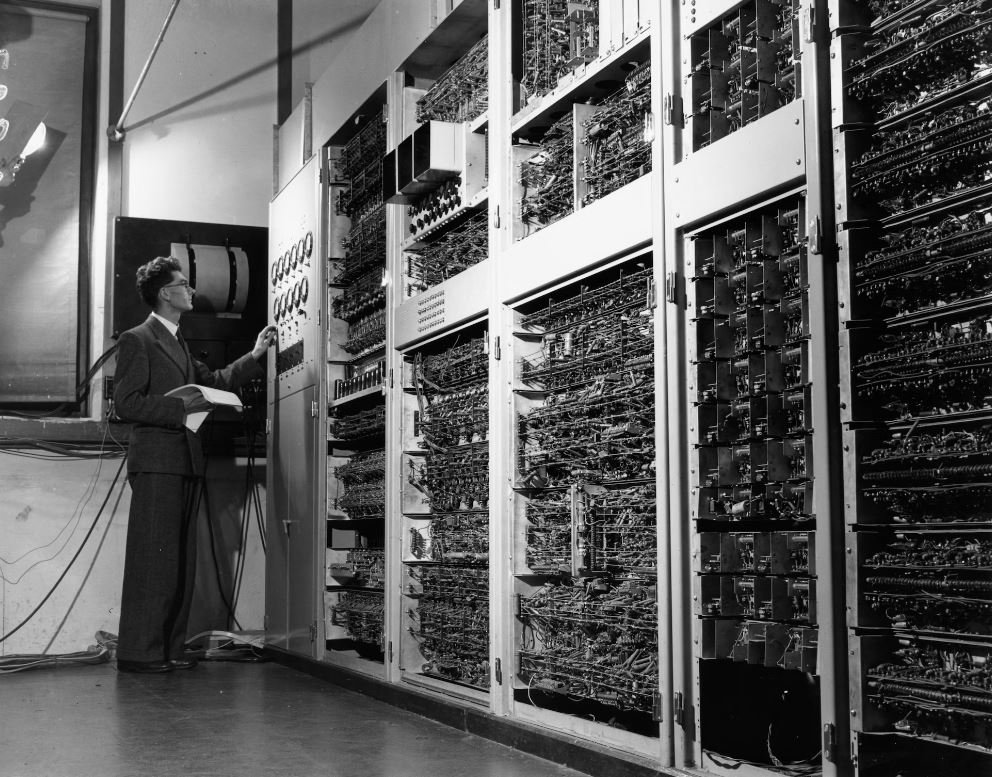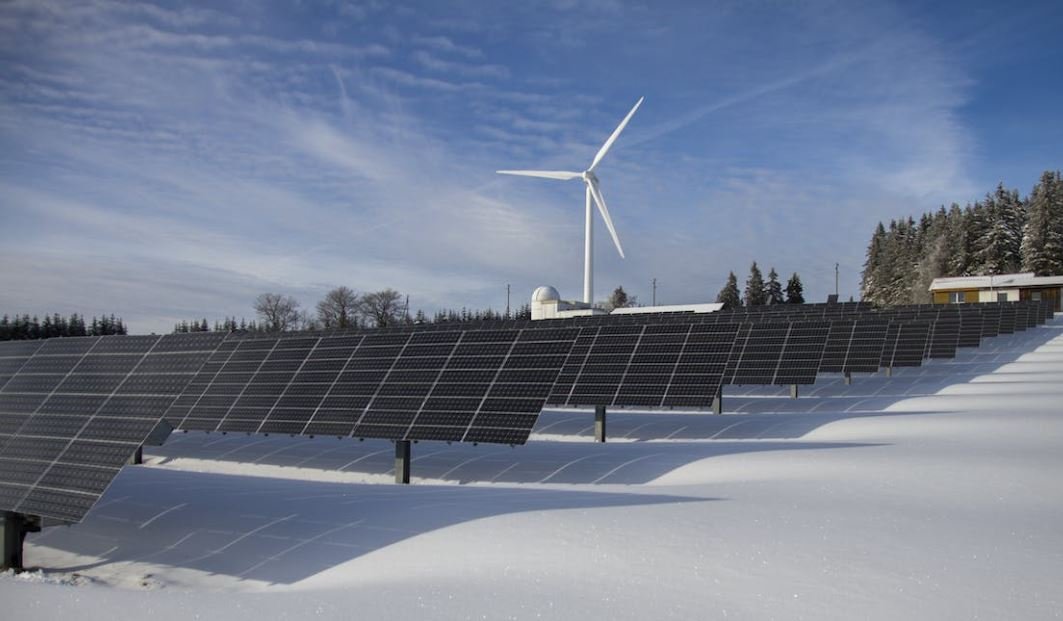The Solar City Project – Empowering Sustainable Urban Development
Solar energy is rapidly emerging as a vital component of sustainable development strategies across the globe. One noteworthy initiative in India is the Solar City Project, which aims to promote the efficient use of solar energy and harness its immense potential in urban areas. This article explores the features, benefits, and impact of the Solar City Project, highlighting its role in creating greener and more sustainable cities.
Key Takeaways
- The Solar City Project is an initiative in India promoting the use of solar energy in urban areas.
- It aims to maximize energy efficiency, reduce greenhouse gas emissions, and improve overall sustainability.
- The project targets a range of solar applications, including power generation, water heating, and street lighting.
Driving Sustainable Development through Solar Power
The Solar City Project is a comprehensive program that encourages the adoption of solar energy across various sectors. It focuses on integrating solar power into buildings, transportation systems, and public infrastructure, thereby reducing dependence on traditional energy sources. **By tapping into the sun’s energy**, this initiative aims to enhance energy security, reduce carbon footprint, and pave the way for more sustainable urban living.
*A significant advantage of this project is its ability to generate clean and renewable power, thus contributing to a significant reduction in greenhouse gas emissions.*
Strategies and Implementation
The Solar City Project employs a multi-pronged approach to promote solar energy adoption. It identifies and designates specific areas within cities as “solar cities,” where various solar installations and projects are carried out. These areas serve as demonstration models, showcasing the feasibility and benefits of renewable energy integration. *For instance, the National Capital Territory of Delhi has been selected as a solar city under this initiative, aiming to harness solar power for both residential and commercial sectors.*
| Projected Solar Power Capacity (MW) by 2022 | |
|---|---|
| Sector | Capacity |
| Residential | 200 |
| Commercial | 500 |
| Public Infrastructure | 300 |
| Transportation | 100 |
The project also focuses on capacity building and public awareness to encourage solar power adoption. It offers specialized training programs, workshops, and awareness campaigns to disseminate knowledge about solar energy technologies and their benefits. *Through these initiatives, the Solar City Project aims to empower individuals and organizations to become active contributors to the sustainable growth of their cities.*
The Impact of the Solar City Project
The Solar City Project has had a profound impact on cities across India, contributing to their transition towards sustainable and resilient urban development. *By 2022, the project targets a cumulative solar power capacity of 1,100 MW through various installations and initiatives.* The use of solar energy in buildings, street lighting, and water heating has led to reduced energy consumption, lower electricity bills, and a significant reduction in carbon emissions. Moreover, the project has created employment opportunities and fostered local economic development through the growth of the solar energy sector.
| Key Achievements of the Solar City Project | |
|---|---|
| Achievement | Impact |
| Installation of solar rooftop systems | Reduction in electricity bills and carbon emissions. |
| Conversion of street lights to solar-powered LED lights | Energy savings and improved lighting infrastructure. |
| Integration of solar water heating systems | Reduced dependency on fossil fuel-based water heating methods. |
Shaping the Future of Sustainable Urban Living
The Solar City Project is a testament to India’s commitment to sustainable growth and the transition towards a low-carbon economy. *With ongoing efforts to promote renewable energy sources and scale up solar power installations*, this project serves as a model for other countries seeking to leverage solar energy for sustainable urban development. By harnessing the power of the sun, the Solar City Project empowers communities to build greener, cleaner, and more resilient cities, ensuring a brighter future for generations to come.
References:
- Ministry of New and Renewable Energy, Government of India (May 2020). Solar City Programme. Retrieved from https://mnre.gov.in/schemes/decentralized-systems/solar-cities-programme

Common Misconceptions
Misconception 1: Solar power is not reliable
One common misconception about solar power is that it is not reliable. However, this is not true. Solar power relies on the energy from the sun, which is abundant and consistent. Here are a few important points to consider:
- Solar panels can still generate electricity on cloudy days, although the output may be reduced.
- Batteries can be used to store excess energy generated during sunny periods for later use, ensuring a continuous power supply.
- Advancements in technology have increased the efficiency and reliability of solar panels, making them a viable option for energy generation.
Misconception 2: Solar power is expensive
Another misconception surrounding solar power is that it is expensive. While the initial cost of installing solar panels may seem high, the long-term benefits outweigh this investment. Here are a few points to consider:
- Solar power helps reduce electricity bills, as you can generate your own electricity.
- Government incentives and tax credits are often available, making solar power more affordable.
- Solar panels have a long lifespan and require minimal maintenance, leading to cost savings over time.
Misconception 3: Solar power is not suitable for all locations
Some people believe that solar power is only suitable for sunny locations and not viable in areas with less sunlight. However, this is not entirely true. Here are a few points to consider:
- Solar panels can still generate electricity in areas with less direct sunlight, although the output may be lower.
- Solar power can still be a viable option in cloudy or colder regions by utilizing larger surface areas or adjusting the positioning of the panels to maximize energy absorption.
- Solar power can be combined with other renewable energy sources, such as wind or hydro power, to ensure a more consistent and reliable energy supply.
Misconception 4: Solar power is detrimental to the environment
There is a misconception that solar power installations harm the environment. However, solar power is actually a sustainable and eco-friendly energy source. Here are a few points to consider:
- Solar power produces no greenhouse gas emissions during operation, unlike fossil fuels, which contribute to air pollution and climate change.
- Manufacturers are increasingly using eco-friendly materials and recycling solar panels at the end of their life cycle to reduce environmental impact.
- By encouraging the use of solar power, we can reduce our reliance on non-renewable resources and move towards a greener future.
Misconception 5: Solar power is inefficient
Some people believe that solar power is inefficient and cannot generate enough energy to meet their needs. However, this is not the case. Here are a few points to consider:
- Advancements in solar technology have significantly increased the efficiency of solar panels, allowing them to convert more sunlight into electricity.
- Solar power systems can be designed to meet specific energy requirements, ensuring that they provide enough electricity for daily use.
- If the solar power generated is not sufficient, grid connection or battery backup can be used as a supplemental source of electricity.

Fact Sheet: Solar Power Generation by Year
In the past decade, solar power generation has witnessed remarkable growth worldwide. This table presents the amount of solar power generated in terawatt-hours (TWh) each year from 2010 to 2020.
| Year | Amount of Solar Power Generated (TWh) |
|---|---|
| 2010 | 51.9 |
| 2011 | 76.8 |
| 2012 | 102.4 |
| 2013 | 142.6 |
| 2014 | 177.6 |
| 2015 | 228.1 |
| 2016 | 303.8 |
| 2017 | 397.7 |
| 2018 | 489.9 |
| 2019 | 586.5 |
| 2020 | 713.3 |
Renewable Energy Sources by Country
Renewable energy has become an integral part of the global energy mix. This table presents the top five countries with the highest contribution of renewable energy sources to their total energy production.
| Country | Renewable Energy Contribution (%) |
|---|---|
| Sweden | 54.6 |
| Costa Rica | 50.7 |
| Germany | 45.5 |
| Nicaragua | 43.0 |
| Scotland | 42.9 |
Solar Panel Efficiency Comparison
Different types of solar panels vary in their efficiency levels. This table compares the efficiency of four commonly used solar panel technologies: monocrystalline silicon, polycrystalline silicon, thin-film, and concentrated solar power (CSP).
| Solar Panel Technology | Efficiency (%) |
|---|---|
| Monocrystalline Silicon | 18-20 |
| Polycrystalline Silicon | 15-18 |
| Thin-film | 9-12 |
| Concentrated Solar Power (CSP) | 20-27 |
Global Investment in Solar Energy (2011-2020)
Investment in solar energy has grown significantly over the past decade. This table highlights the global investment in solar energy in billion US dollars from 2011 to 2020.
| Year | Investment (USD billion) |
|---|---|
| 2011 | 98.5 |
| 2012 | 135.8 |
| 2013 | 149.5 |
| 2014 | 149.4 |
| 2015 | 285.9 |
| 2016 | 283.3 |
| 2017 | 161.0 |
| 2018 | 139.8 |
| 2019 | 138.2 |
| 2020 | 243.1 |
Solar Power Capacity by Country
Several countries have made significant progress in increasing their solar power capacities. This table shows the top five countries with the highest solar power capacity in megawatts (MW).
| Country | Solar Power Capacity (MW) |
|---|---|
| China | 285,166 |
| United States | 94,372 |
| Japan | 64,634 |
| Germany | 49,785 |
| India | 42,754 |
Benefits of Solar Energy
Solar energy offers numerous advantages, including environmental benefits and cost savings. This table highlights some of the key benefits of utilizing solar energy.
| Benefit | Description |
|---|---|
| Renewable | Solar energy is a renewable resource, ensuring sustainable power generation. |
| Reduced Carbon Emissions | Solar power helps reduce greenhouse gas emissions, mitigating climate change. |
| Energy Independence | Solar energy reduces dependence on fossil fuels and foreign energy sources. |
| Lower Electricity Bills | Using solar power can significantly reduce electricity costs over time. |
| Job Creation | The solar industry creates employment opportunities, supporting economic growth. |
Solar Panel Lifespan Comparison
Different types of solar panels have varying lifespans. This table compares the average lifespan of four types of solar panels: monocrystalline silicon, polycrystalline silicon, thin-film, and concentrated solar power (CSP).
| Solar Panel Technology | Average Lifespan (years) |
|---|---|
| Monocrystalline Silicon | 25-30 |
| Polycrystalline Silicon | 20-25 |
| Thin-film | 10-20 |
| Concentrated Solar Power (CSP) | 25-35 |
Solar Power in Homes
In recent years, more homeowners have been adopting solar power for their residences. This table showcases the top five countries with the highest number of residential solar power installations.
| Country | Residential Solar Power Installations |
|---|---|
| Australia | 2,648,000 |
| United States | 1,886,676 |
| Germany | 1,697,320 |
| Japan | 1,233,180 |
| Italy | 800,278 |
Solar Energy Consumption by Sector
Solar energy is utilized across various sectors to meet different energy needs. This table shows the percentage of solar energy consumption in three sectors: residential, commercial, and industrial.
| Sector | Solar Energy Consumption (%) |
|---|---|
| Residential | 38 |
| Commercial | 33 |
| Industrial | 29 |
Conclusion
The Solar City Project, as explored in this article, showcases the growing significance of solar energy in the global energy landscape. Solar power generation has witnessed steady growth, with increasing investment and capacity in various countries. The efficiency and lifespan of solar panels have improved over time, making solar energy more accessible and reliable. By leveraging the benefits of solar energy, such as reduced carbon emissions, energy independence, and potential cost savings, societies can transition towards a more sustainable and renewable future.
Frequently Asked Questions
What is the Solar City Project?
The Solar City Project is an initiative launched by the government to promote the use of solar energy in cities. It aims to reduce dependence on conventional sources of energy and encourage the adoption of renewable energy technologies.
How does the Solar City Project work?
The Solar City Project works by implementing various measures to increase the use of solar energy in cities. This includes setting up solar power plants, rooftop solar installations, solar street lighting, solar water heating systems, and promoting solar awareness and education among residents.
What are the benefits of the Solar City Project?
The Solar City Project brings several benefits, including reduced carbon emissions, decreased reliance on fossil fuels, lower electricity bills for residents and businesses, job creation in the renewable energy sector, and increased energy security.
Who can participate in the Solar City Project?
Any city or municipality interested in promoting the use of solar energy can participate in the Solar City Project. The project is designed to be inclusive and encourages the involvement of government bodies, residents, businesses, and educational institutions.
How can individuals contribute to the Solar City Project?
Individuals can contribute to the Solar City Project by installing solar panels on their rooftops, using solar water heating systems, opting for solar-powered appliances, and participating in solar awareness programs. They can also support local initiatives and campaigns that promote solar energy.
Are there any financial incentives for participating in the Solar City Project?
Yes, there are several financial incentives available for those who participate in the Solar City Project. These may include subsidies, tax credits, net metering, and grants provided by the government or other organizations. The specific incentives may vary depending on the location and local policies.
How can businesses benefit from the Solar City Project?
Businesses can benefit from the Solar City Project in multiple ways. By adopting solar energy, they can reduce their operational costs, enhance their environmental reputation, attract eco-conscious customers, and take advantage of tax incentives or grants offered for renewable energy adoption.
What are the challenges of implementing the Solar City Project?
Implementing the Solar City Project may face challenges such as initial investment costs, lack of solar infrastructure, limited public awareness and understanding of solar energy, and regulatory or policy hurdles. However, these challenges can be overcome through proper planning, stakeholder collaboration, and supportive government policies.
Can the Solar City Project be replicated in rural areas?
While the Solar City Project primarily focuses on cities, its principles and measures can be adapted and replicated in rural areas as well. Rural communities can benefit from solar electrification, decentralized solar power generation, and solar-based livelihood opportunities.
Where can I find more information about the Solar City Project?
You can find more information about the Solar City Project on the official website of the Ministry of New and Renewable Energy or by contacting your local municipal corporation or renewable energy agency. Additionally, there are several research papers, case studies, and reports available that provide in-depth insights into the project.




